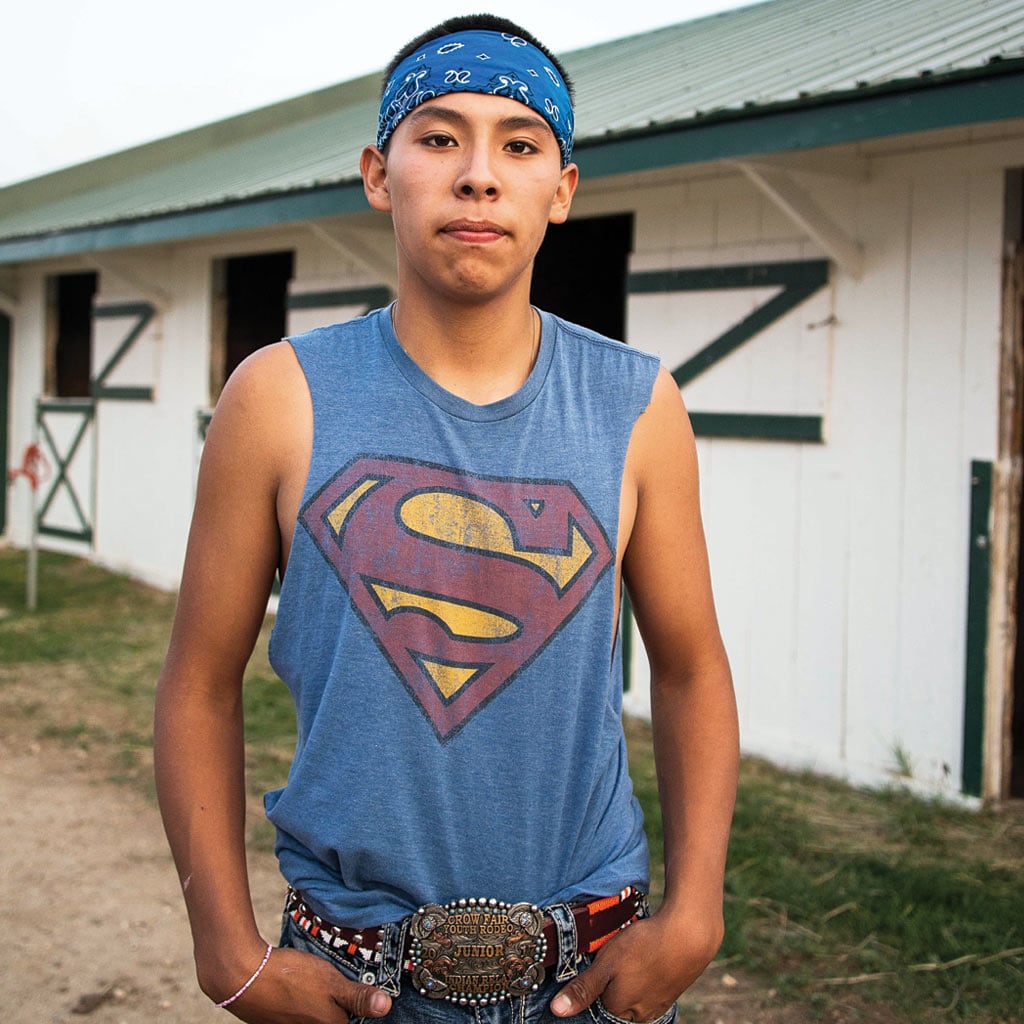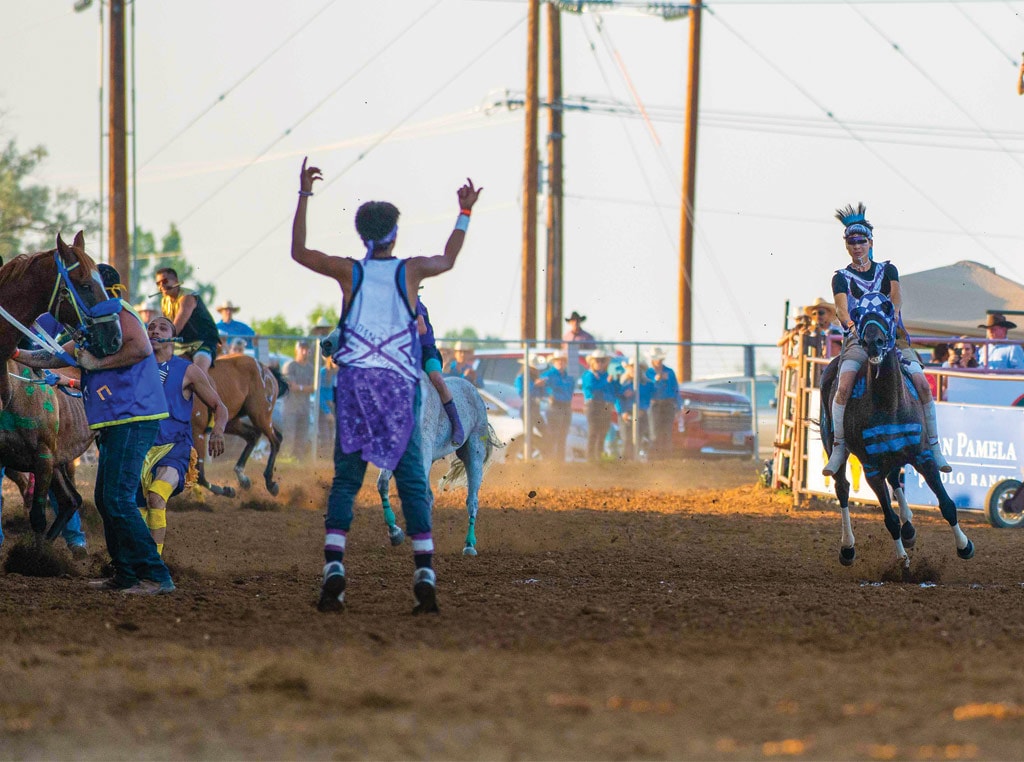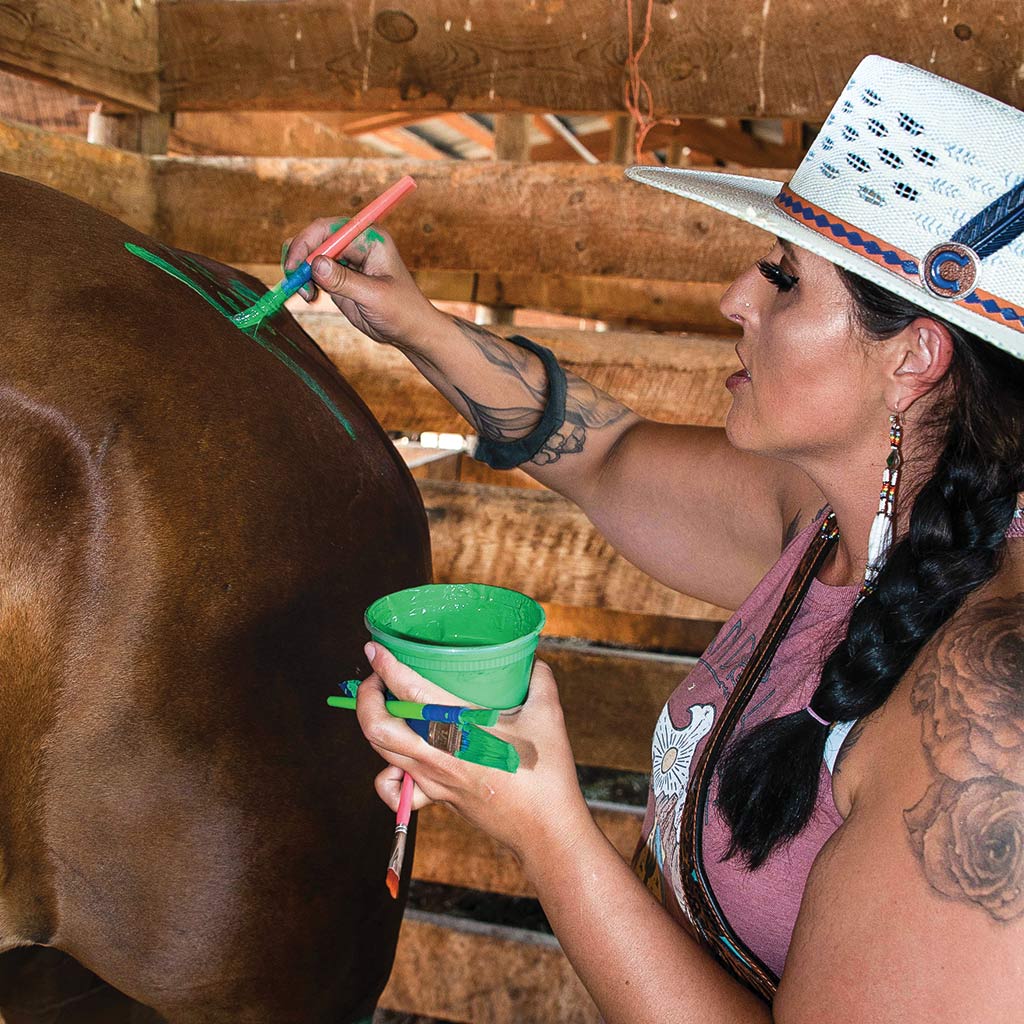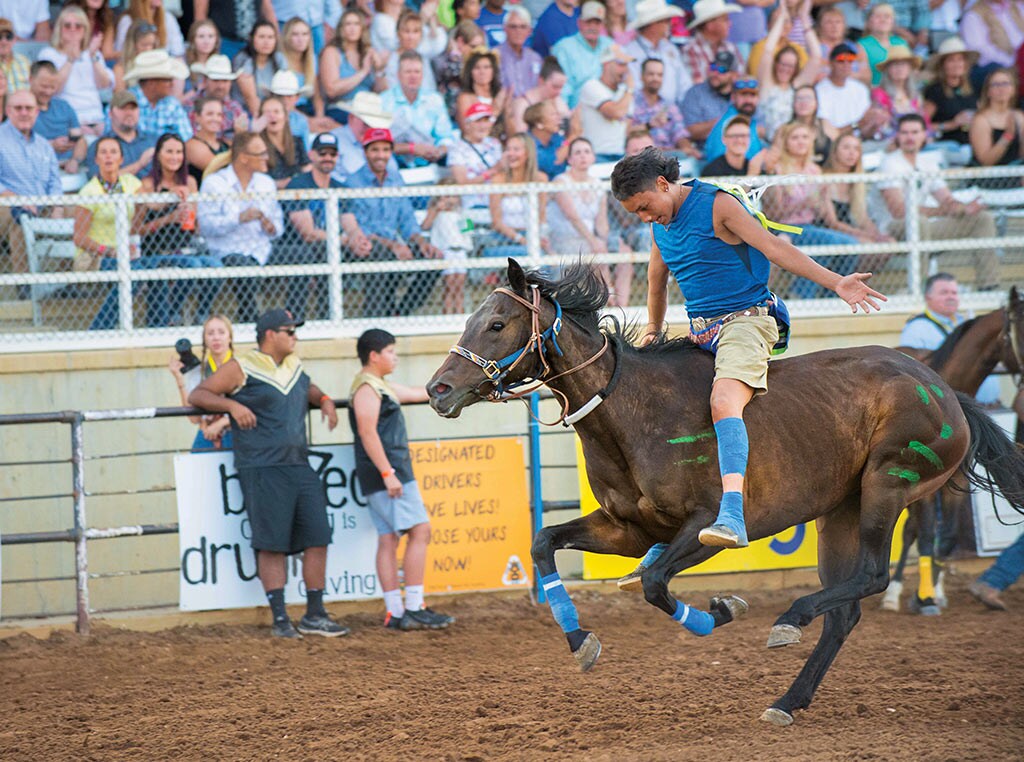Rural Living April 01, 2022
Relay Horse Racing
The wild world of bareback horse racing.
It's a wild spectacle to behold for anyone. Those who've spent time in the saddle, though, see Indian Relay Racing for what it is — an incredibly impressive display of horsemanship by people whose culture revolves around the horse.
Let's set the stage. A relay team consists of three horses, a rider, a catcher/mugger and two holders. Four to six teams enter the arena portion of the track per heat. Two horses and their holders head for the rail to wait their turn at the action.
The starting horses, riders and muggers line up arena center, riders on the ground. A shot is fired. Riders launch onto their horses' bare backs — did I mention there are no saddles in this race? With legs clamped tight and arms holding on for all they're worth, together horse and rider make a lunging start before speeding off around the track — when it goes well.
Often excited horses rear and lunge, teams bump into one another, people get run over (see team captain and acting mugger Gilbert Ecoffey bear the brunt of a rough start below) and a horse sometimes leaves without a rider.
Riders at this stage cling precariously to the horse’s neck while they clear the chaos and reach speed. Ecoffey’s rider, Tyler Cottier-Grass, proved his skill, staying mounted despite a stumbling start. He went on to place second in the heat thanks to smooth exchanges.
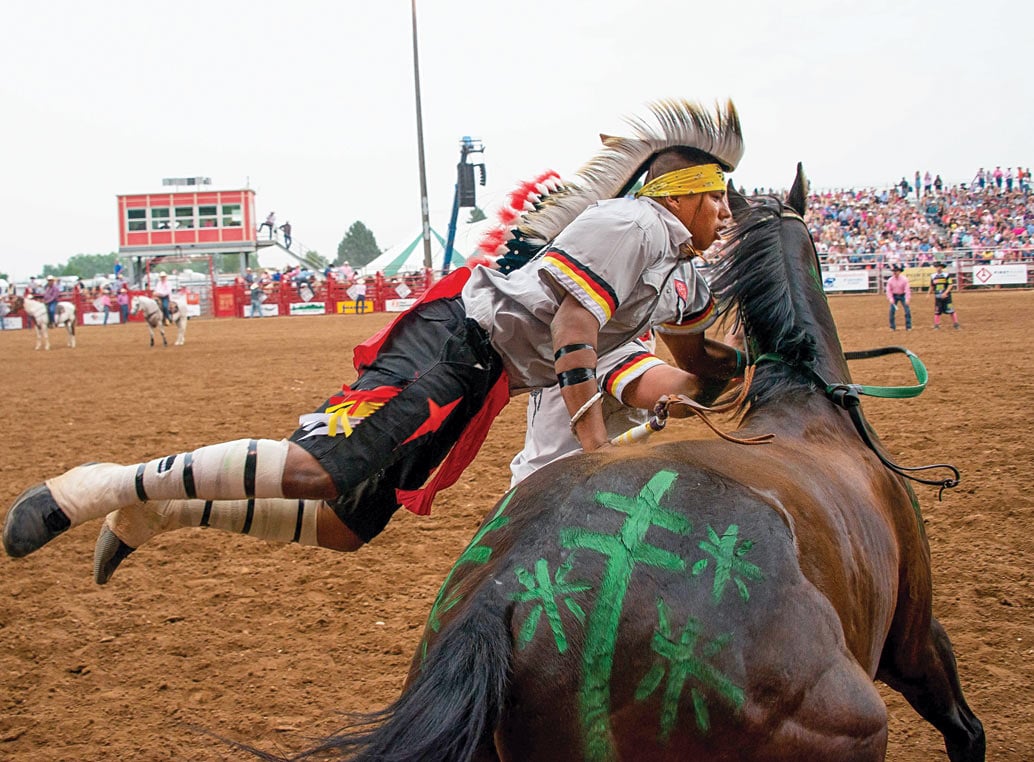
Above. Gilbert Ecoffey gets caught in a momentary tangle before horse and rider, Tyler Cottier-Grass, were off at speed. Arena dirt on the horse’s back provides traction as he launches onto his next mount.
"You have to wrap yourself around the neck and hold on for dear life until you get out of that scary zone," says 16-year-old Tristan Birdin Ground (facing page), a rider with two years of racing under his belt already. He refers both to the start of the race and wild bump and run exchanges.
After a trip around the track, riders make an action-packed pit stop. First they must find their team in the melee. The catcher grabs their speeding mount as the rider leaps from its back and launches onto the next horse. Lunging away again, they battle their way back on the track. All this happens in the span of a few breaths.
Another lap of the track and a final exchange occurs before the final lap. As riders cross the finish line they let go of still charging mounts to shoot imaginary arrows into the crowd or some other salute of their own making — their version of an end zone dance.
The rider gets a fair amount of the glory, but a lot depends on the ground team. Davis Yellow Bull on purple-clad Dancing Warrior team is a catcher. On the next page he can be seen jumping to get rider, Kaden Brings Plenty's, attention.
"I have to catch the horse and get it out of the way," Yellow Bull says. If he misses it slows the exchange, which is where most races are won and lost. If the horse gets away from him or jostles another team excessively they earn a foul and are disqualified from the heat.
"The horse is on a dead run coming in. I have to move fast," he says.
On the side, holders position the next horse for the rider and keep the other horses calm.
Back home. These photos were taken on the big stage of the legendary 2021 Sheridan WYO Rodeo World Championship Indian Relay Race. But Indian Relay Racing is just the tip of the horse culture iceberg for participants.
The race is an extension of traditional horse games played by the tribes for hundreds of years.
"We've always been known as the Horse Nation," says Ecoffey, a member of the Oglala Lakota tribe. He runs his team, Ecoffey Express, out of Wounded Knee, South Dakota, when the third-generation trainer isn't tearing up the flat-track circuit with his 48-horse stable.
Above. Richard Long Feather and sons, Jace (rider) and Jestin, enter the WYO arena. Lawson Ecoffey tries on his dad’s headdress.
"Back home there are horse races in one of the districts every weekend. There's kids playing horseback capture the flag, racing down creek banks on their ponies and racing full out on packed bush tracks."
There's the rescue race where a rider speeds down, picks up another person and comes back. The hide race where a rider pulls a teammate on a tanned cow hide and the lance ride where riders spear hoops.
"You'll see kids riding their horses through the Taco John's drive through in our town," adds Ecoffey's sister, Donnel. "It's not uncommon to see four kids on one horse riding down the street."
William 'Shorty' Brewer is captain of the Dancing Warrior team of Pine Ridge, South Dakota.
"I've been around horses my whole life. We've always gone to the horse games and races, rode on trail rides. The little kids watch and want to be a part of it," he says.
In this case, the kids were his grandsons. He put together a starter team with just saddle horses and began racing. They've now been at it approaching a decade.
"For me, it's a way to show the kids there's other things in life than sitting at home, fighting depression, drinking, drugging. You can get out and do something," he says. "Horses are medicine for me."
Good medicine. The horse spirit is healing — a sentiment expressed over and over again among teams. It became clear this sport isn't about winning big money (breaking even would be a feat). The races are about pride, spiritual health, tradition and a love of family and those considered family.
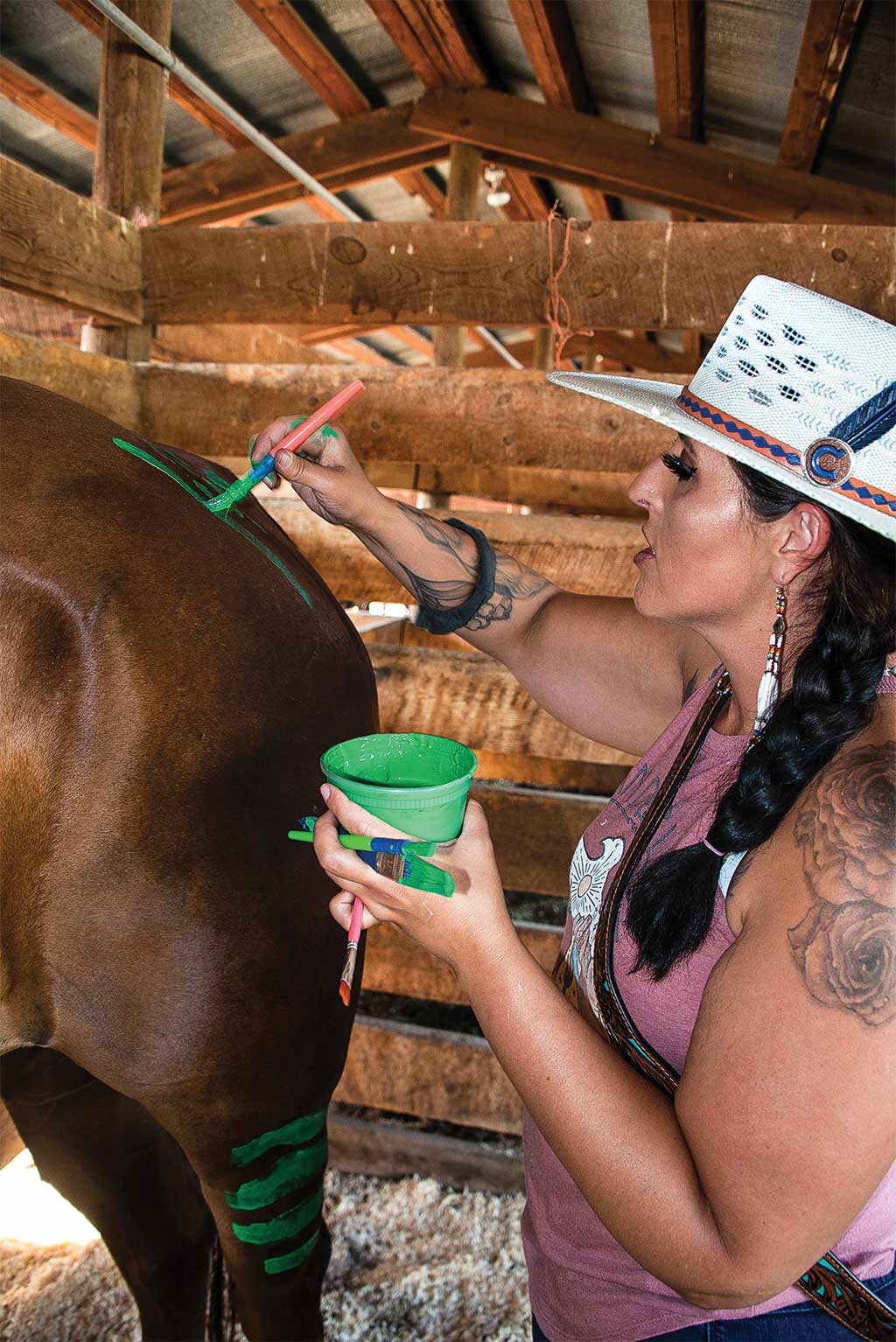
Teams share a tribe, history and ancestors. Races allow generations to gather and express long-held traditions. Horses and teams hit the track having been blessed with burning sage. Tiny paint hand prints from the youngest team members and other traditional markings decorate the horses.
Donnel explains hail and lightening are for strength, arrows are for shooting straight, a circle around the eye is so a warrior can see the enemy in battle.
Generational involvement goes beyond horse painting to the arena.
"The youngest jockey I recall was 11 and the oldest participant was 'Mervin' on the Crow team. He was in his mid seventies out there as a backholder every year," marvels WYO Rodeo race organizer, Jess Sams.
Teams often include women with some races being women only. There are 'legends' races for older riders. Children have pony relays.
"It's nerve wracking to watch as a mother, but the kids want to do what they see in their culture. Not everyone can ride, but the ones who have guts get good," says Anna Birdin Ground, Tristan's mother.
Above. Volunteer WYO Rodeo board members Jess Sams and Lonnie Wright have run the race for years, watching as each new generation hits the track.
Worry isn't a bad idea. Richard Long Feather of Standing Rock, North Dakota, races with his sons. On the third race day, Jace came off wrong, dislocating his shoulder. Long Feather tried to put it back in and finish. It didn't work. But they're still winning.
"I admire my sons," Long Feather says, who at 58 was the champion jockey in a Legends race earlier in the year. "I get choked up that we get to do this together and that they're doing good in life.
"It can be a tough life in Indian country. My boys are setting an example using what God gave us — eyes, legs and feet — to the fullest. As a result, we've been blessed." ‡
Read More
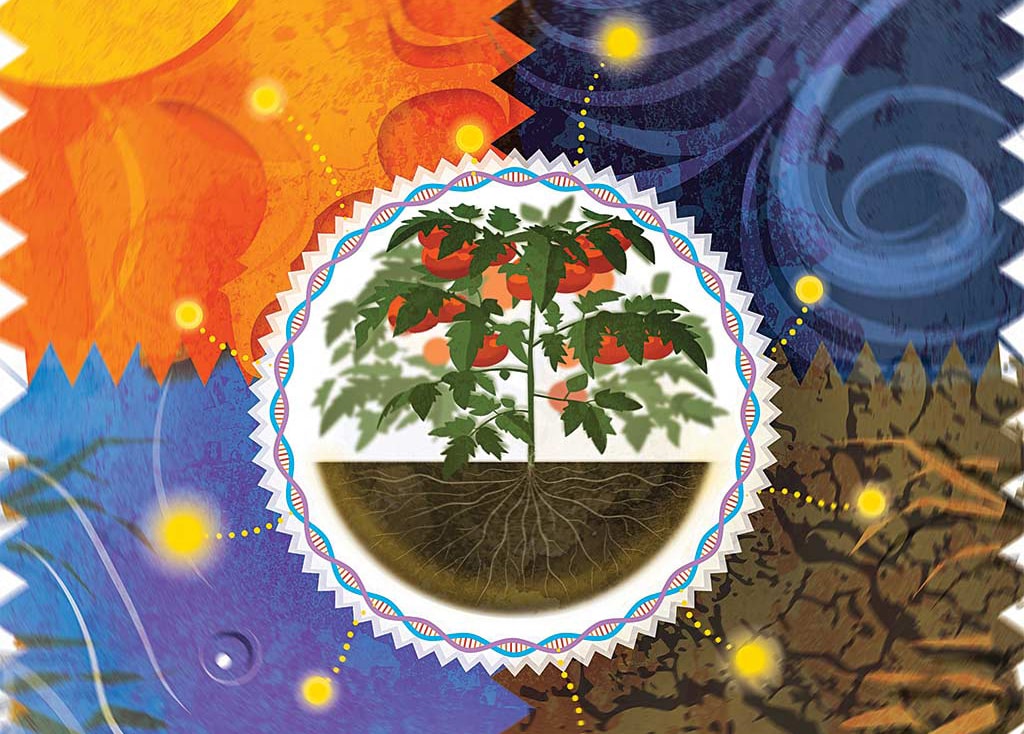
AGRICULTURE, SUSTAINABILITY
Engaging Plant Armor
Epigenetics prepares crops to face the worst and still yield.
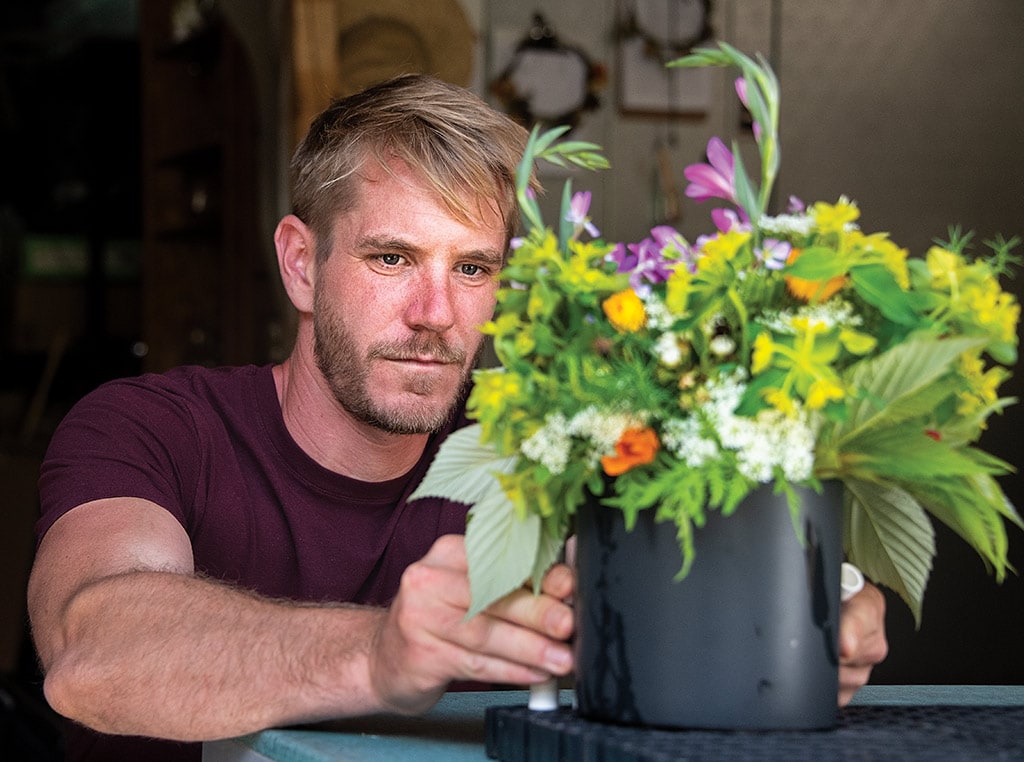
SPECIALTY/NICHE
Making Arrangements
Flower arranging takes small farm to the next level.


